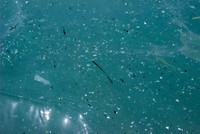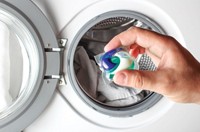Advertisement
Grab your lab coat. Let's get started
Welcome!
Welcome!
Create an account below to get 6 C&EN articles per month, receive newsletters and more - all free.
It seems this is your first time logging in online. Please enter the following information to continue.
As an ACS member you automatically get access to this site. All we need is few more details to create your reading experience.
Not you? Sign in with a different account.
Not you? Sign in with a different account.
ERROR 1
ERROR 1
ERROR 2
ERROR 2
ERROR 2
ERROR 2
ERROR 2
Password and Confirm password must match.
If you have an ACS member number, please enter it here so we can link this account to your membership. (optional)
ERROR 2
ACS values your privacy. By submitting your information, you are gaining access to C&EN and subscribing to our weekly newsletter. We use the information you provide to make your reading experience better, and we will never sell your data to third party members.
Pollution
Focusing on the fate of flushed contact lenses
Hydrogel materials could be a source of microplastics in the environment
by Bethany Halford
September 11, 2020
| A version of this story appeared in
Volume 98, Issue 35

As many as 45 million people in the US wear contact lenses, but what happens to those disposable silicone hydrogel hemispheres once their daily, biweekly, or monthly wear life is over? A new study suggests that many contact lenses get flushed down the drain and become microplastic pollutants (Environ. Sci. Technol. 2020, DOI: 10.1021/acs.est.0c03121). Arizona State University’s Rolf U. Halden, Charles Rolsky, and Varun P. Kelkar simulated what would happen to contact lenses in a wastewater treatment facility. They determined that lenses don’t break down chemically but instead break into smaller fragments. The ASU team then examined sewage sludge and indeed found such lens fragments. To get a sense of how often contact lenses are flushed away, the team surveyed contact lens users on their disposal habits. They found that roughly 20% of users put their lenses down the drain. This practice, the researchers estimate, could result in 44,000 kg of lens material discharged into US wastewater each year. Halden says that amount—even though a small fraction of the overall plastic waste entering the environment—is worrisome. “It illustrates our broken relationship with a ubiquitous, mass-produced material that has no end-of-life strategy and that likely will outlive not only all humans currently alive but humanity itself,” he says. Halden advises contact lens users to not flush their lenses and to consult their optometrists about recycling options.





Join the conversation
Contact the reporter
Submit a Letter to the Editor for publication
Engage with us on Twitter